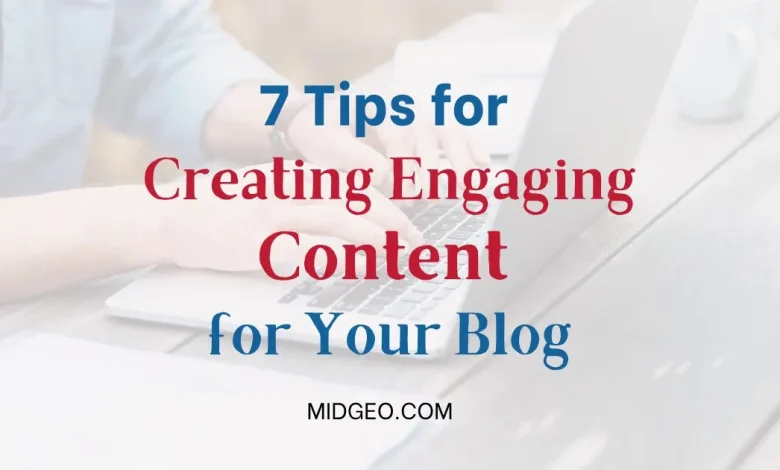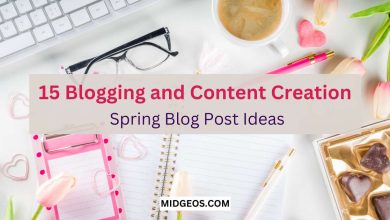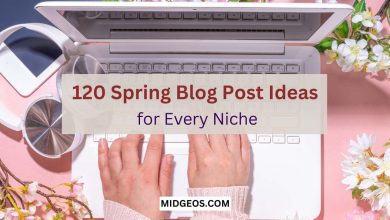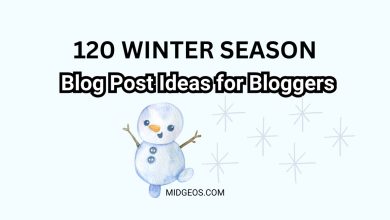Unveiling Success: 7 Tips for Creating Engaging Content for Your Blog

Uncover the secrets of creating engaging content for your blog. Explore strategies, tips, and the importance of crafting content that captivates your audience.
Learn how to measure engagement and stay ahead with the most popular and enduring online content. Elevate your blog with the power of compelling storytelling and understand why engagement is the key to success.
So, welcome to the journey of crafting captivating content that not only speaks to your audience but also keeps them coming back for more. In the dynamic world of blogging, creating engaging content is not just a skill—it’s a game-changer.
In this guide, we’ll delve into the intricacies of what makes content truly engaging, explore strategies to make your blog stand out, and understand the significance of audience interaction.
So, what exactly is engaging content, and why does it matter? How do you ensure that your content resonates with your audience, and what sets apart the most popular online content from the rest? These questions, among others, will be answered as we unveil the secrets of successful blogging.
- 120 Best Christmas Blog Post Ideas for Every Niche
- My Blogging Journey: How I Earned My First $1000 After 3 Years of Hard Work
- Fall Tech Wishlist: Blogger Favorites for 2025 – Must-Have Gadgets to Power Your Autumn Life
- 120 Fall Blog Post Ideas (2025): Drive Seasonal Traffic with Engaging & Evergreen Topics
- 120 Awesome Summer Blog Post Ideas for All Niches
Whether you’re a seasoned blogger looking to enhance your content or a newcomer seeking guidance, join us on this exploration of creating content that not only grabs attention but leaves a lasting impact.
Let’s embark on the path to unlocking the full potential of your blog through the magic of engagement.
Creating Engaging Content for Your Blog
What is engaging content?
Engaging content is the type of material that captivates and holds the attention of your audience. It goes beyond just providing information; it seeks to connect with readers on a deeper level. Engaging content is able to evoke emotions, spark thoughts, and inspire action. It creates a lasting impression on your audience, keeping them coming back for more.
How do you Make content engaging?
Creating engaging content requires careful thought and planning. Here are some strategies to make your content more captivating:
- Tell a compelling story: People are naturally drawn to stories. Incorporate narratives into your blog posts to make them relatable and enjoyable to read. Use vivid descriptions, engaging characters, and a unique plot to keep your readers hooked.
- Use visuals: Visual elements such as images, videos, infographics, and charts can greatly enhance the engagement of your content. They break up the text, make it more visually appealing, and help to convey information in a more digestible way.
- Incorporate interactive elements: Engage your readers by including interactive elements in your content. This could be in the form of quizzes, surveys, polls, or puzzles. By actively involving your audience, you create a more immersive experience that keeps them engaged.
- Ask questions: Encourage interaction by posing thought-provoking questions throughout your blog post. This invites your readers to reflect, share their opinions, and engage in discussions in the comments section.
What content is most engaging?
While the definition of engaging content may vary depending on your target audience and niche, there are some types of content that tend to be universally engaging:
- Personal narratives: Sharing personal experiences, anecdotes, and stories helps readers connect with you on a deeper level. It adds a human touch to your content and makes it more relatable.
- Tutorials and how-to guides: Practical content that teaches your audience how to do something step-by-step is highly engaging. People are always searching for solutions to their problems, and providing them in a clear and informative manner resonates with readers.
- Listicles: Articles that present information in a list format are popular because they are easy to scan and consume. From “Top 10 Tips” to “5 Ways to Improve”, listicles offer quick and actionable insights that readers find valuable.
- Visual content: As mentioned earlier, incorporating visual elements in your content can significantly increase engagement. This includes images, videos, infographics, and memes that are relevant to your topic.
Why is engaging content important?
Engaging content is crucial for several reasons:
- Increased readership: Engaging content attracts more readers and keeps them coming back to your blog. When your content resonates with people, they are more likely to share it, increasing your reach even further.
- Builds trust and credibility: When you consistently produce high-quality and engaging content, you establish yourself as an authority in your niche. This builds trust and credibility with your readers, making them more likely to seek your advice and recommendations in the future.
- Improves conversion rates: Engaging content has the power to convert readers into customers or subscribers. When your audience is captivated by your content, they are more willing to take the desired action, whether it’s making a purchase, signing up for your email newsletter, or booking a consultation.
How do you know if your content is engaging?
Tracking engagement metrics is essential to gauge the success of your content. Here are some key indicators to look out for:
- Social shares: The number of times your content is shared on social media platforms is a good measure of its engagement level. If people find your content valuable and engaging, they are more likely to share it with their followers.
- Comments and discussions: The number of comments and the level of engagement in the comment section of your blog post is a good indicator of how your content resonates with your audience. Meaningful discussions and conversations suggest that your content is sparking interest and generating engagement.
- Time on page: If your audience spends a significant amount of time reading your content, it shows that they are engaged and find value in what you have to say. Analyze the average time on page to assess the level of engagement.
- Conversion rates: Tracking conversion rates can give you a clear idea of whether your content is engaging enough to prompt readers to take action. If you see an increase in conversions, it indicates that your content is resonating with your audience.
What is the most engaging online content?
The most engaging online content varies depending on the platform and audience. However, some types of content tend to perform well across different channels:
- Videos: Video content has skyrocketed in popularity due to its ability to convey information in an engaging and visual format. Whether it’s YouTube, Instagram Reels, or TikTok, videos have become an incredibly effective way to captivate and connect with audiences.
- Infographics: Infographics are visually appealing and present complex information in a concise and easily understandable manner. They are highly shareable, making them ideal for social media platforms.
- Long-form articles: While shorter content often performs well, long-form articles also hold great potential for engagement. When written in an engaging and informative style, longer articles allow you to dive deep into a topic and provide readers with valuable insights.
- Interactive content: Interactive content, such as quizzes, polls, and interactive infographics, encourages active participation from the audience. This not only enhances engagement but also provides a personalized experience.
7 Tips for Creating Engaging Content for Your Blog
Creating Engaging Content that captivates your audience is an essential skill for any blogger. Here are seven invaluable tips to ensure your blog content not only grabs attention but keeps your readers coming back for more:
- Know Your Audience:
Understand your target audience’s preferences, interests, and pain points. Tailor your content to resonate with them on a personal level, creating a stronger connection.
- Compelling Headlines:
Capture attention with intriguing and relevant headlines. A compelling title sets the stage for your content and entices readers to delve into what you have to offer.
- Visual Appeal:
Enhance your content with visually appealing elements. Incorporate images, infographics, and videos to break up text, making your blog more engaging and shareable.
- Tell Stories:
Humans are naturally drawn to stories. Weave narratives into your content to make it relatable and memorable. Storytelling adds a personal touch that resonates with your audience.
- Interactive Elements:
Encourage reader participation with interactive elements. Polls, quizzes, and calls-to-action prompt engagement, turning passive readers into active participants.
- Consistent Posting Schedule:
Establish a regular posting schedule to keep your audience anticipating your content. Consistency builds trust and loyalty, creating a dedicated readership.
- Quality Over Quantity:
Focus on delivering high-quality content rather than overwhelming your audience with frequent, subpar posts. Quality content establishes your credibility and keeps readers returning for more.
Implementing these tips will not only enhance the engagement of your blog but also contribute to its long-term success.
What content is good content?
Good content is content that is well-researched, well-written, and provides value to your audience. Consider these characteristics to ensure your content is of high quality:
- Relevance: Good content is relevant to your target audience’s interests, needs, and pain points. It addresses their problems and offers practical solutions or valuable insights.
- Accuracy: Good content is accurate and supported by credible sources. Ensure that you fact-check your information and provide proper citations or links to back up your claims.
- Readability: Good content is easy to read and understand. Use clear language, break up your text into manageable paragraphs, and utilize headings, subheadings, and bullet points to enhance readability.
- Uniqueness: Good content stands out from the crowd. Avoid regurgitating information that can be found elsewhere. Offer fresh perspectives, unique insights, and original ideas to make your content memorable and interesting.
Why is my content not engaging?
If you are struggling to create engaging content, several factors could be at play:
- Lack of personalization: Your content may feel impersonal or detached. Make sure to inject your unique voice, personal anecdotes, and opinions into your writing to add a genuine human element.
- Over-reliance on AI patterns: Using recognizable AI patterns in your writing can make it sound robotic and generic. Take the time to break away from these patterns and write in a way that feels natural and conversational.
- Clustering similar words: Diversify your vocabulary and avoid clustering similar words. This will add variety to your content and make it more engaging to read.
- Lack of creativity: If your content feels stale or lacks originality, try thinking outside the box. Offer perspectives and ideas that no one else has provided before. Introduce humor or quirky analogies to make your writing memorable.
What is the most popular content?
The popularity of content can vary depending on the trends, interests, and preferences of your target audience. Here are a few types of content that are currently popular:
- How-to guides and tutorials: As mentioned earlier, practical content that teaches readers how to do something is always in demand. People are constantly seeking information on how to improve their skills or solve problems.
- Product reviews: With the rise of e-commerce, product reviews have become incredibly popular. Consumers rely on detailed and unbiased reviews before making purchasing decisions. Providing thorough and honest product reviews can attract a wide audience.
- Opinion pieces: Offering your unique perspectives and opinions on current events, trends, or controversial topics can spark discussions and debates. Opinion pieces that are well-argued and thought-provoking tend to attract attention and engagement.
I hope this post can help you understand Creating Engaging Content for Your Blog How to Write Your First Blog Post: 10 Steps for Beginners in 2024
How do I choose my content?
Choosing the right content for your blog requires understanding your audience and their needs. Here are some steps to guide your decision-making process:
- Research your audience: Conduct thorough research to learn about your target audience’s demographics, interests, and pain points. This will help you identify the topics that resonate with them.
- Analyze your competitors: Study your competitors to see what type of content is performing well in your niche. Look for gaps and opportunities where you can provide unique value.
- Consider keyword research: Utilize keyword research tools to identify popular search terms related to your niche. This can help you align your content with what people are actively searching for.
- Leverage your expertise: Focus on topics that align with your expertise or experience. Your unique insights and knowledge will make your content more authoritative and valuable.
What content is popular now?
The popularity of content is constantly evolving as trends and interests change. However, some content types that are currently popular include:
- Sustainable living: As more people become aware of the impact of their actions on the environment, content related to sustainable living, eco-friendly products, and zero-waste lifestyles has gained significant popularity.
- Wellness and self-care: With an increased focus on mental and physical well-being, content that promotes wellness, self-care practices, mindfulness, and holistic health is highly sought after.
- Diversity and inclusivity: The demand for diverse and inclusive content is on the rise. People want to see representation and content that celebrates different cultures, backgrounds, and identities.
What should you use to help Google understand images?
To help Google understand images, you should utilize alt tags. Alt tags are descriptive text alternatives that are attached to images. They serve two main purposes:
- Accessibility: Alt tags make your images accessible to people with visual impairments who rely on screen readers. By providing a descriptive alt tag, you ensure that everyone can understand the content of your images.
- SEO: Alt tags are also crucial for search engine optimization. Including relevant keywords in your alt tags helps search engines understand the context and relevance of your images, improving their visibility in search results.
Which of these is a blogging platform?
WordPress is a popular blogging platform that allows users to create and manage their own websites and blogs. It offers a user-friendly interface, a wide range of customizable themes and plugins, and extensive functionality for publishing and organizing content.
- Which Blogging Platform is Best for Making Money In 2024
- How to Start a Blog for Beginners in 2024 – Step by Step Guide
Which network has the longest life for a piece of content?
LinkedIn has the longest life for a piece of content compared to other social media networks. While content on platforms like Twitter and Facebook can quickly fade away in users’ feeds, LinkedIn’s algorithm tends to prioritize content with high engagement, allowing it to reach a larger audience over a longer period of time.
In conclusion, creating engaging content for your blog is crucial for attracting and retaining readers. By following the three factors of perplexity, burstiness, and predictability, along with the guidelines for human-like, original content, you can produce high-quality content that connects with your audience.
Remember to incorporate personalization, avoid AI patterns, and introduce unique stylistic elements to make your content stand out.
By choosing relevant, well-researched, and unique topics, you can create a lasting impression and build a dedicated audience for your blog.




